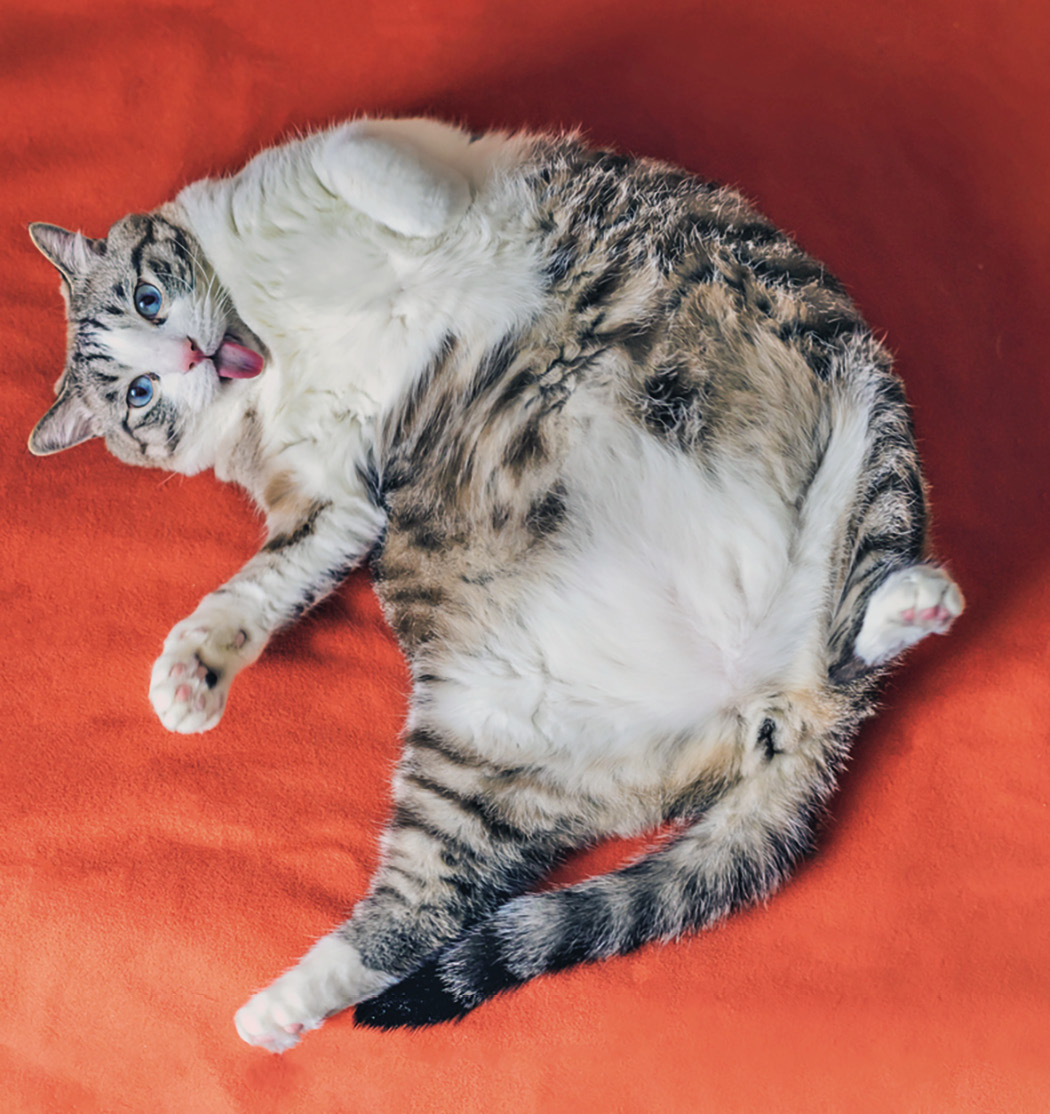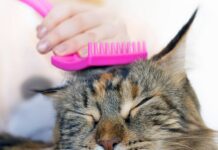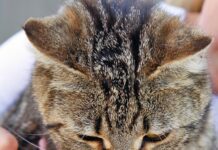As well as wreaking havoc on the inside of your cat’s body, excess weight can cause problems on the outside of your cat. Feline skin is meant to lie flat along a sleek body and to be groomed regularly to remove debris and disperse normal skin secretions. When “slightly pudgy” turns to “hefty chonker,” skin folds can form and become a site of infections.
Perfect Recipe
Your cat’s skin has a variety of glands that secrete oils and other substances that lubricate and moisturize the skin and coat. When your cat grooms himself, his tongue spreads the oils around and removes any excess. For most cats, you will never notice these skin secretions.
Buildup is when problems can occur. Obese cats often struggle to reach all parts of their body during grooming because they are less flexible. If the cat also has a health issue such as diabetes, he may neglect his grooming habits simply because he doesn’t feel good. The skin will continue to secrete as usual, leaving an oily coating to build up on the hair coat and in skin folds.
“As the sebum and apocrine sweat accumulate in the folds, bacteria, yeast, or both join the party and cause inflammation and odor,” says William H. Miller Jr., VMD, board-certified dermatologist and professor emeritus of medicine at Cornell University’s College of Veterinary Medicine.
What to Watch For
Skin fold infections are easy to spot if you know what to look for. Dr. Miller says that cats often try to lick the area because the inflammation is uncomfortable. The skin will be red and inflamed, and there will likely be visible buildup of oily debris. Severe infections may be accompanied by sores.
Many cats will still lick themselves even if they can’t reach the area with the problem, so check your cat’s entire body if you notice him licking one spot excessively but that skin appears healthy.
Odor is another sign of a problem. “If the cat sits on the owner’s lap, the owner should be concerned for the cat’s personal hygiene—bad body odor!” says Dr. Miller. Yeast infections can smell kind of like bread dough or corn chips, but any strong or abnormal odor coming from your cat is cause for concern.
Weight Loss and Skin Care
“The obvious answer to the problem is weight reduction,” says Dr. Miller. “If that’s not going to happen, the answer is frequent cleaning of the folded area. If the bacterial or yeast overgrowth has already set in, medicated cleaning pads are indicated.”
Once you suspect that your cat has a skin infection, he will need to visit your veterinarian. The veterinarian will likely take a swab of the area and look at it under a microscope to see if bacteria or yeast are present. He or she may then recommend or dispense a medicated wipe that you can use to soothe the skin and defeat the microscopic invaders.
For chronic infections that don’t respond to treatment, your veterinarian may send out a sample for a culture and sensitivity test to identify the exact pathogen(s) causing the infection and which medications will kill them. Topical treatments are preferred, but some severe infections may require systemic medications that are given by mouth (thankfully, this is rare).
Continuing Care
As long as your cat continues to be overweight and to have skin folds, he will be at risk for these infections. Dr. Miller recommends using a basic diaper wipe for daily cleaning of all skin folds once the infection has been resolved.
“If the cat won’t lose weight and the owner can’t or won’t clean the folds, it’s time to visit a surgeon,” says Dr. Miller. Surgery can be performed to remove the skin fold. This is obviously an extreme solution to the problem, so treating and preventing skin fold infections with medications and good hygiene are preferred.
If your cat isn’t crazy about being held and handled, make daily wiping sessions a positive experience by allowing him a tiny amount of a tasty treat. Also see if lifting him up onto a table or chair is more agreeable to him than holding him in your lap.
Prevention
Ideally, you can prevent skin fold infections by not allowing your cat to become overweight in the first place. But if you do find yourself in possession of an obese cat, start by talking to your veterinarian about a safe, gradual weight loss program and figuring out an optimal feeding routine for him.
Monitor your cat’s skin and coat to be sure that he is grooming normally. If you notice greasy buildup on the hair, introduce short sessions of brushing each day. Check his whole body—don’t forget the belly and between the hind legs—for skin folds where bacteria or yeast might decide to set up shop. If your cat has skin folds, wipe them regularly with a plain, unscented diaper wipe to keep the skin healthy until your cat is able to groom that area on his own again.




